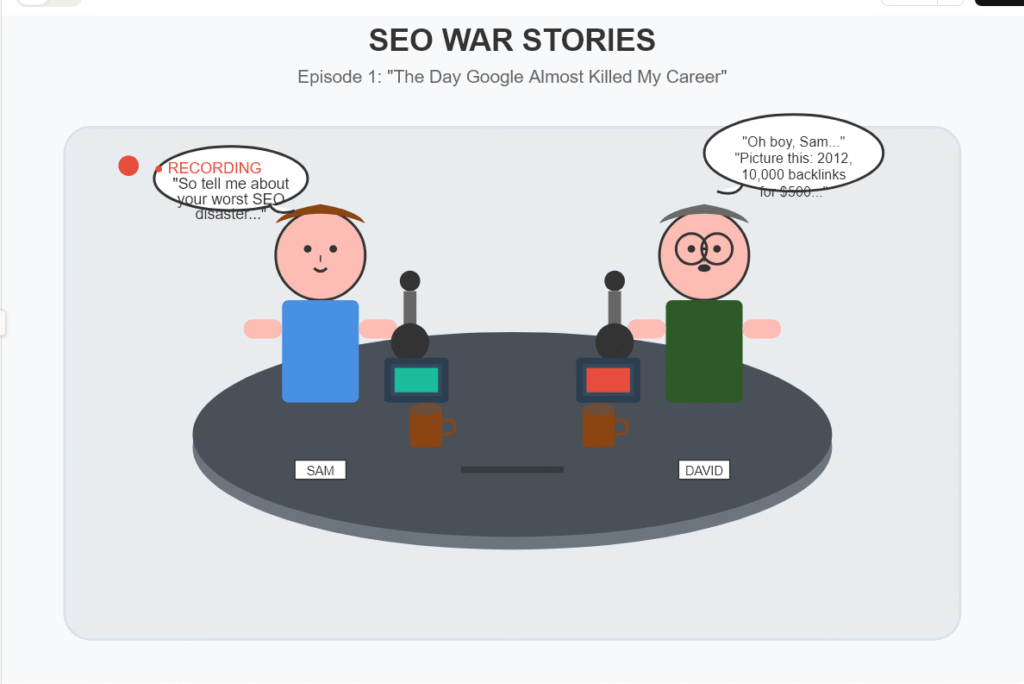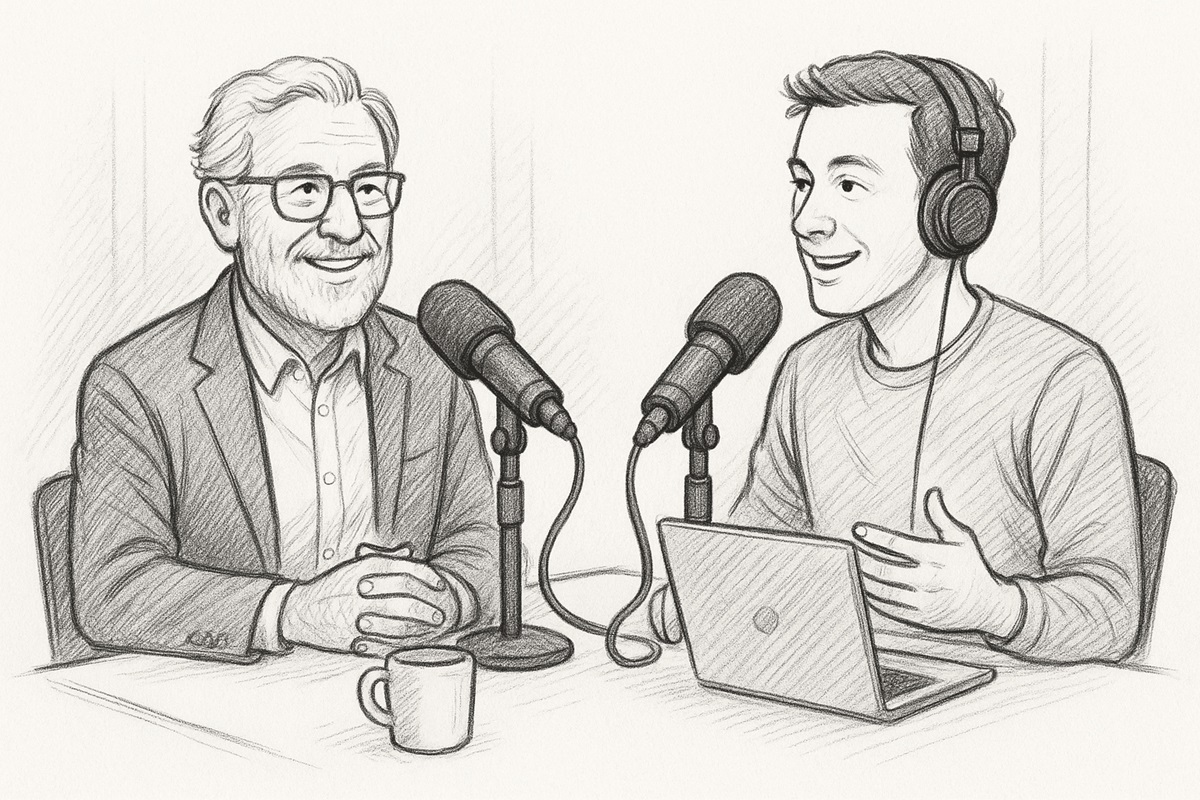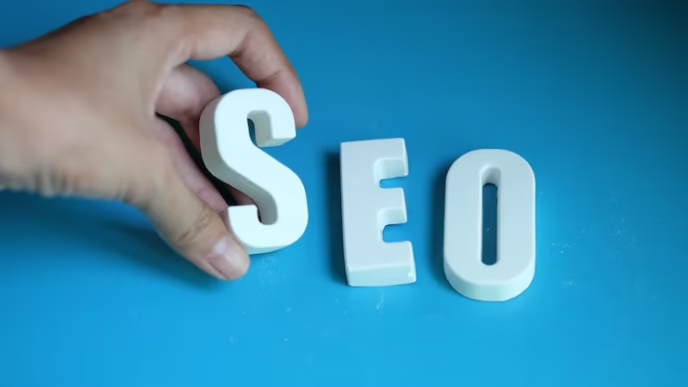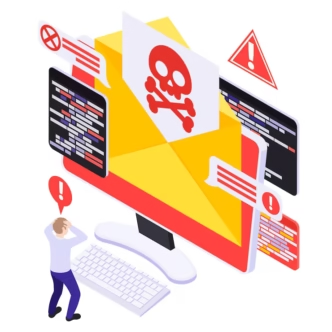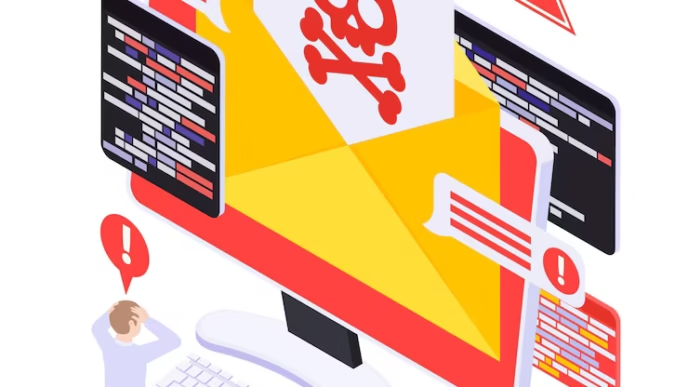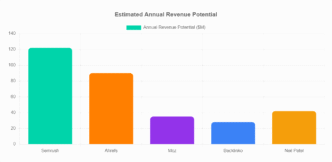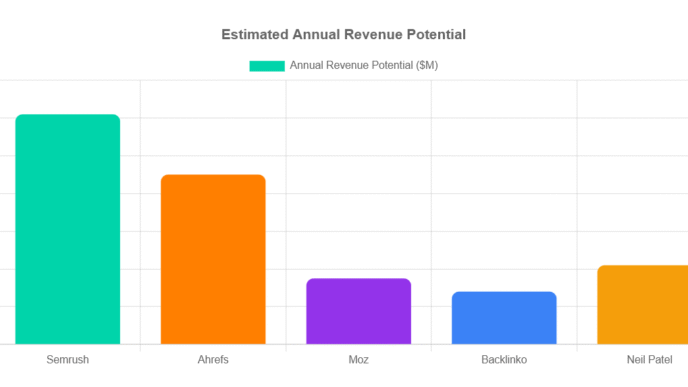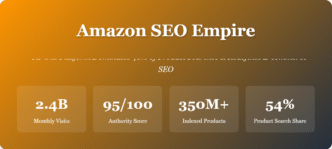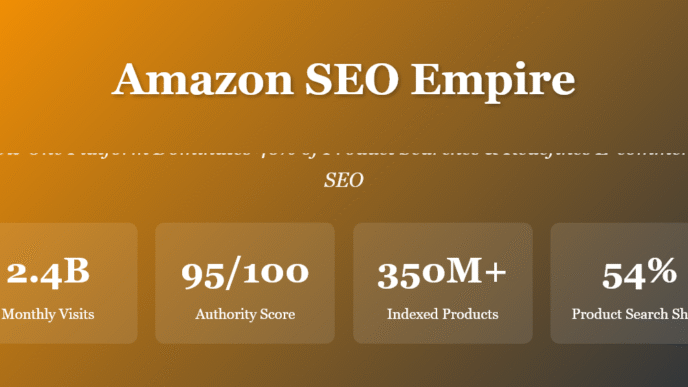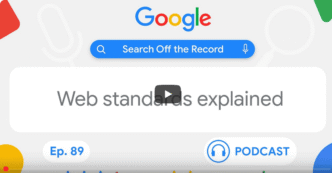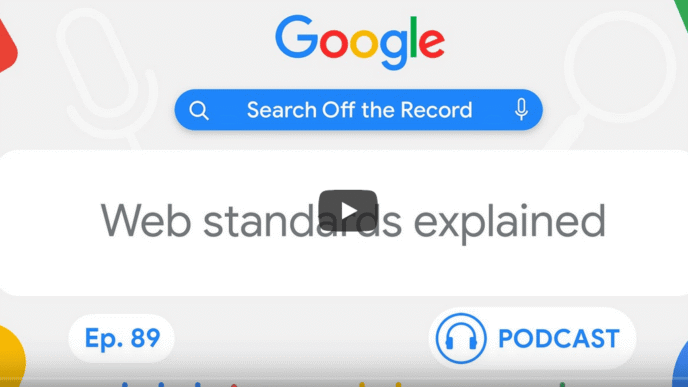Absolutely! Let’s kick off Episode 1 of the interview between Mr. Sam (the curious SEO enthusiast) and Mr. David (the seasoned SEO veteran), with a mix of real-life vibe, practical insights, and a touch of humor. This episode will focus on “How Mr. David Fell Into SEO (and Survived His First Client)”.
Table of Contents
Toggle
🎙️ SEO STORIES: EPISODE 1 – “It All Started With a Bakery…”
[INTRO MUSIC FADES OUT]
Sam:
Welcome to SEO Stories, the podcast where algorithms change, but curiosity stays constant. I’m your host, Sam – part-time keyword nerd, full-time SEO sponge. And today… we’re kicking off something special.
Because with me is a man who’s seen more Google updates than most of us have cups of coffee. From the wild west of SEO forums to boardroom battles over bounce rate – please welcome, Mr. David!
David:
Hey Sam! Thanks for having me. And wow, “more updates than cups of coffee”? That’s not far off—I once tried to debug a site during the Panda update while holding a cappuccino in one hand and my career in the other.
Sam (laughing):
Oh, I already know this is going to be good. So David, let’s start from the beginning. Was SEO your childhood dream? Were you the 8-year-old optimizing your Lego blog?
David:
Ha! If only. No, I actually started in graphic design. My first real SEO gig? Total accident. A friend’s cousin owned a bakery—let’s call it Jenny’s Crusty Delights. Beautiful muffins, terrible website.
Sam:
Crusty Delights! That sounds… borderline concerning.
David:
Yeah, the name didn’t help the click-through rate. Anyway, the site wasn’t showing up anywhere on Google. They asked me, “You know websites, right? Can you make us appear on the internet?”
I said, “Sure, how hard could it be?”
Cue dramatic music and 6 months of chaos.
Sam:
Ah, the classic SEO origin story—blind optimism meets HTML. What happened?
David:
I did what any genius would do: I went on Google and searched “How to rank on Google.”
First thing I tried? Keyword stuffing. The homepage said “best muffins in town” like… 43 times. Even the footer had muffins.
Sam:
Nothing says professional like “muffins, muffins, muffins” in size 8 gray font at the bottom of a page.
David:
Exactly. The site looked like a muffin cult manifesto. But the real kicker?
It actually worked. For a week.
We hit page 1. Jenny thought I was some kind of wizard. Then boom—vanished. Turns out Google doesn’t like muffin spam.
Sam:
So that was your first “Google slap”?
David:
Oh yeah. And it taught me SEO isn’t magic—it’s more like gardening. You plant, water, wait, and Google still might crush your soul.
Sam:
I love that analogy. So what did you actually learn from the Crusty Delights saga?
David:
Three big lessons:
Shortcuts work… until they don’t.
You have to understand the user before the search engine.
Never optimize for keywords you wouldn’t want your mom to read out loud.
Sam:
That last one might save careers. So where did you go after muffins?
David:
From muffins to mechanics to law firms. Every niche had its own quirks. But I carried every screw-up forward. That’s the thing about SEO—it’s one big experiment, and you’re always mid-lab.
Sam:
And sometimes the lab catches fire.
David:
Every Monday morning.
🎯 Takeaway for Listeners:
Don’t fall for early SEO myths—like “more keywords = more traffic.”
Start by solving real user problems. Google will follow.
Document everything. Even your fails. Especially your fails.
Sam:
Alright folks, that’s a wrap on Episode 1. Next time, we’re diving into “The Day an Algorithm Update Ruined My Vacation.” Spoiler: it involves a beach, a broken backlink profile, and a panicked client named Gary.
David:
Oh, Gary. Good times.
[OUTRO MUSIC]
Great! Let’s roll right into Episode 2 of the SEO Stories series with Mr. Sam and Mr. David.
🎙️ SEO STORIES: EPISODE 2 – “The Algorithm Update That Ruined My Vacation”
[INTRO MUSIC FADES IN, THEN OUT]
Sam:
Welcome back to SEO Stories — where real search pros share real experiences, real mess-ups, and hopefully real lessons. I’m Sam, your host, and today, we’re picking up right where we left off — muffins in the past, mayhem in the future.
Mr. David, are you ready to talk about the vacation that Google gatecrashed?
David:
Let’s do it. Though I might need therapy after revisiting this one.
Sam:
We’ll provide virtual tissues. So set the scene for us.
🏖️ Scene: Sun, Sand, and SERP Panic
David:
Alright. It’s 2012. I’m finally taking a real vacation after months of client work. I’m in Greece—Santorini. White rooftops, blue domes, a chilled drink in hand. Life is good.
Until my phone buzzes.
Client: “Our traffic dropped by 60% overnight. What did you do???”
Sam:
Wow. From sunsets to stress in 3 seconds flat.
David:
Exactly. I check the analytics—free fall.
I Google around and boom: it’s the Penguin update. Google just dropped a hammer on sites with spammy backlink profiles. And guess what? My client had one of the spammiest.
Sam:
Were these links you built?
David:
Nope. They came with the client. When I onboarded them, I didn’t do a deep enough link audit. I was too focused on fixing their content and technical issues, assuming the backlinks were “probably okay.”
Sam:
Rookie mistake?
David:
Major. I underestimated how long bad backlinks could haunt a domain.
⚠️ The Hard Lesson: Know Your Link History
David:
We had to act fast. I downloaded every backlink they had, used tools to sort by anchor text and domain type. You’d cry if you saw this anchor list. Stuff like:
“Buy cheap electronics”
“Viagra Canada”
“Online poker bonus 2011”
This was a law firm, Sam. A law firm!
Sam (laughing):
Maybe they were ahead of their time—diversifying.
David:
Ha! I wish. The reality? Some shady agency in 2009 bought thousands of backlinks from link farms.
Sam:
So what did you do?
🔧 The Fix: Disavow, Educate, Rebuild
David:
We submitted a disavow file—told Google “we don’t vouch for these links.”
Started a clean backlink strategy—guest posts, PR outreach, citation cleanup.
Most importantly, I educated the client about link hygiene. Because they were like, “We thought more links = better.” Classic.
Sam:
Was the recovery quick?
David:
Oh no. It took 4-6 months before we fully saw a bounce back. SEO is like karma—it remembers everything you did. Especially the shady stuff.
🧠 Takeaways for Listeners:
Never skip a backlink audit. Even if it’s a legacy site.
Anchor text spam = red flag. If it doesn’t sound human, it’s hurting you.
Set expectations: SEO recovery is a slow marathon, not a sprint.
Sam:
I love how honest you are about the pain. Because we all glamorize SEO success, but it’s the recovery stories that teach us the most.
David:
If someone else can avoid a ruined vacation because of this story, my sunburn will have been worth it.
Sam:
Beautiful. Alright, next episode: Corporate SEO Nightmares — aka “How I got 18 approvals for one title tag change.” You in?
David:
Oh boy. Get ready for some executive-level madness.
[OUTRO MUSIC]
✅ Ready for Episode 3?
In the next episode, we’ll explore:
SEO bureaucracy in large companies
Communication breakdowns
How to advocate for SEO in a room full of non-SEOs
🎙️ SEO SESSIONS: EPISODE 3 — “18 Approvals for a Title Tag”
Subtitle: The Corporate SEO Chronicles
[INTRO MUSIC — upbeat, modern, a bit cheeky]
Sam:
Welcome back to SEO Sessions, where we explore the search engine jungle one strange safari at a time. I’m your host Sam, and today… we step into a land where SEO dreams go to die: Corporate SEO.
Mr. David, welcome back. You ready to talk office politics and keyword wars?
David:
I’m ready, but I should warn your listeners—this episode may contain… excessive use of acronyms and the phrase “circle back.”
Sam:
Trigger warning: MS Teams pop-ups.
Alright—so you’ve worked with startups, small businesses, and then… the corporate beasts. What was the biggest shock when you made that leap?
🏢 The Shift: From Hustle to Hierarchy
David:
Oh man. At a small business, you have too little help. In corporate SEO? You have too many cooks and no one knows where the kitchen is.
My first corporate SEO gig?
Took me 18 email threads, 4 Zoom calls, and 3 approvals just to change one homepage title tag.
Sam:
I’m guessing it wasn’t even a controversial tag?
David:
Nope. Just changing “Home” to “Digital Payment Solutions | [Brand Name].” Totally sensible.
But suddenly:
Legal had questions.
Brand team wanted it “more emotionally resonant.”
Product wanted their feature in it.
The VP asked if we were “over-indexing on search.”
Sam:
Ah yes, the ancient art of overthinking a 60-character line.
David:
Exactly. And you know what really got me? No one objected to the actual strategy. They just weren’t used to SEO being in the room.
⚖️ The SEO-Non-SEO Disconnect
David:
Here’s what I learned fast:
In big companies, SEO isn’t just about Google—it’s about diplomacy.
You have to sell the why before the what.
Most people hear “SEO” and think you’re just gluing keywords to stuff.
Sam:
So how’d you learn to get things through the system?
🧠 David’s Corporate SEO Survival Toolkit
David:
3 key things helped me:
Make your SEO goals match business goals.
Talk about revenue, not just rankings. Say “this can improve lead quality” instead of “it helps with crawlability.”Create visual reports.
Show what the title tag change did on a similar page. Numbers move opinions.Become friends with Legal, Dev, and Content.
Buy them coffee. Celebrate their wins. SEO is 50% search… 50% soft skills.
😂 Funniest Moment?
Sam:
What’s the most ridiculous approval process you’ve been part of?
David:
Once, a CMO delayed meta description updates because she “wanted them to sound more luxurious.”
We were optimizing a 404 page.
Sam (laughs):
You’re telling me… she wanted luxury branding… on a page that says “this content doesn’t exist”?
David:
Hey, at least we made the best-dressed error page in the industry.
🧭 Listener Takeaways:
Corporate SEO = people management + search expertise
Speak business, not just SEO lingo
Build influence, not just recommendations
Show wins with data—even if small
Sam:
Alright, that wraps up our tour through Corporate SEO Madness. David, thank you for surviving title tag warfare to tell the tale.
David:
Always a pleasure, Sam. I’m still waiting for approval to speak freely, by the way.
Sam:
Haha. Coming up next on SEO Sessions: Episode 4 – Tools, Tactics, and Time Wasters — David’s favorite SEO tools and the ones that wasted hours of his life.
David:
Prepare to roast some shiny dashboards.
[OUTRO MUSIC]
🎙️ SEO SESSIONS: EPISODE 4 — “Tools, Tactics, and Time Wasters”
Subtitle: What’s in Mr. David’s SEO Toolbox (and What’s in the Trash)
[INTRO MUSIC — chill beat, subtle glitch effects like a tech vibe]
Sam:
Welcome back to SEO Sessions, the only show where we untangle Google’s algorithms with duct tape, caffeine, and questionable metaphors.
I’m your host Sam, and today, we’re unlocking the toolbox of our resident veteran — Mr. David. He’s been through more dashboards than most of us have browser tabs.
David:
True story. I once tried to export a site audit report and it froze my laptop… and my will to live.
🧰 The Tools That Made a Difference
Sam:
So let’s jump in. Everyone wants to know: What are the SEO tools you can’t live without?
David:
I’ll break them into 3 categories:
(1) Core Tools, (2) Bonus Tools, and (3) “Looks Cool But Wasted My Time” Tools.
🔹 1. Core Tools (Use Them Weekly)
Google Search Console:
Still underrated. People chase shiny SaaS tools but miss the obvious stuff GSC tells you—clicks, impressions, CTR by query, crawl issues. Pure gold.Screaming Frog:
My go-to crawler. Great for finding broken links, redirect chains, missing tags. If you don’t love Screaming Frog, you haven’t crawled enough.Ahrefs / SEMrush:
Choose your fighter. I lean toward Ahrefs for backlink audits and SEMrush for site audits and competitive research.Google Sheets + Looker Studio (formerly Data Studio):
For dashboards, reports, and that one VP who says, “Can you show me this in a pie chart?”
🎯 2. Bonus Tools (Situational Winners)
AnswerThePublic:
For content ideas, especially when clients say, “What should we write about?”Surfer SEO / Clearscope:
Great for on-page optimization. But don’t become a slave to keyword scores.Wayback Machine:
I use this to diagnose when traffic dropped because someone deleted a killer page in 2019 without telling anyone.
Sam:
The Wayback Machine is like SEO archaeology.
David:
Exactly. I’ve used it to bring ancient blog posts back from the dead.
🚫 3. Tools That Look Great But Waste Time
David:
I won’t name names, but… let’s just say:
If a tool shows “Content Score: 89.4 vs. Competitor 90.1”, and the client starts obsessing over it—run.
Tools that gamify SEO too much can distract from actual strategy.
Some tools sell fear: “Your site is at 63% SEO health!” But it’s missing an image alt tag on the Terms & Conditions page.
Sam:
So tools can both help and hurt, depending on how you use them?
David:
100%. Tools should support your thinking, not replace it.
🧠 David’s Rules for Choosing SEO Tools
Ask: Does this tool solve a real problem I have right now?
Don’t buy everything. Master 3-5 tools deeply, not 15 poorly.
Free tools > Fancy tools… if you know how to use them.
Sam:
Love that. Because SEO isn’t about how many tools you own, it’s how well you use them.
David:
Exactly. The best SEO tool? Your brain — trained by experience and bad decisions.
🎓 Listener Takeaways
Master the basics: GSC, crawling tools, keyword and backlink research
Don’t chase shiny dashboards — chase user impact
If a tool adds confusion, not clarity — ditch it
Sam:
Alright folks, that wraps Episode 4. David, thanks for showing us what’s in the toolbox—and what belongs in the digital dumpster.
David:
Anytime. And if anyone finds my old MOZ login with 45 saved keyword lists… please delete it.
Sam:
Next time on SEO Sessions:
Episode 5 – Content Is King… and Other Misused Buzzwords — we unpack content strategy, keyword intent, and David’s opinion on writing “ultimate guides” for the 17th time.
David:
I’ve got stories. And regrets.
[OUTRO MUSIC]
🎙️ SEO SESSIONS: EPISODE 5 — “Content Is King… and Other Misused Buzzwords”
Subtitle: Why Google Doesn’t Care About Your 3,000-Word Ultimate Guide
[INTRO MUSIC — upbeat, witty with a nerdy edge]
Sam:
Welcome back to SEO Sessions — the show where we decode SEO, dodge jargon, and politely roast old strategies that just won’t die.
I’m Sam, your host, and with me again is the content-weary, keyword-scarred, and algorithm-seasoned Mr. David.
David:
Great to be here. I brought a thesaurus and a headache.
👑 The Content Hype Machine
Sam:
Let’s start here: We’ve all heard the phrase “Content is King.”
But I get the sense, David… you have a bit of a love-hate relationship with that line?
David:
Oh yes. It’s not that it’s wrong — it’s just incomplete.
Content is King… but Relevance is Queen, and Intent is the Secret Service.
I’ve seen people publish 10,000 words of beautifully written fluff that answers none of the user’s actual questions. It ranks on page 8 and dies in silence.
Sam:
So what’s the biggest content mistake you see?
❌ Top 3 Content Sins (David’s Edition)
David:
Writing for Google, not humans.
Keyword stuffing is alive and well, just sneakier. I once saw a blog post mention “best CRM for dentists” 42 times in 1,500 words. Even Google got annoyed.Ultimate Guide Syndrome.
Everyone’s writing the “Ultimate Guide to X” but:It’s not original
It’s not useful
And it reads like a Wikipedia article written by an intern on Red Bull
Ignoring Search Intent.
Clients say, “We want to rank for ‘buy sunglasses’”
I ask: “Are you writing a blog about the history of sunglasses?”
Wrong format, wrong time, wrong audience.
🔍 David’s Content Strategy Framework
David:
My rule is: “What would a smart person, in a hurry, actually want here?”
I break content strategy into 4 parts:
Discover: What’s the user’s intent? Informational, commercial, transactional, navigational?
Deliver: Is this the right format? Blog, product page, video, FAQ, tool?
Delight: Can I answer their question better than anyone else?
Drive: Is this content part of a larger funnel or is it just floating in blog limbo?
Sam:
That’s clean. SEO meets UX meets common sense.
David:
Exactly. Write like a human. Structure like a machine. Promote like a marketer.
✍️ Content Tips from the Trenches
Sam:
Any practical tips for folks writing content today?
David:
Glad you asked. Here are my go-to moves:
Use SERP analysis before you write.
Google the keyword. See what’s ranking. If everything’s a listicle, don’t publish a dense essay. Mirror intent.Don’t write for a keyword—solve a problem.
Keywords are the starting point, not the end goal.Use internal linking early and often.
Every great piece of content should connect to a cluster.Make the first 100 words count.
Hook the reader. Respect their time. Bonus if you naturally hit a featured snippet.
🧠 One “Content” Moment That Still Haunts You?
David:
One client insisted on publishing a blog titled:
“Why We’re the Best in the Industry (2020 Edition)”
…in 2023.
I begged them to change it. They said, “It still ranks when I Google our name.”
Yes. Because you’re Googling your own name, Barbara.
🎓 Listener Takeaways
Match content type to search intent.
Forget the buzzwords—focus on clarity, utility, and structure.
SEO content isn’t just longer—it’s smarter.
Update old content. It’s easier to rank revived pieces than start from scratch.
Sam:
David, thank you for that therapy session disguised as a content strategy lesson.
David:
Anytime. I charge by the word, but only if it’s semantically relevant.
Sam:
Next time on SEO Sessions:
Episode 6 – Clients, Chaos, and Communication
We’ll talk about managing expectations, explaining SEO without boring people, and why clients always ask, “How long until we’re #1 on Google?”
David:
I’ve got a spreadsheet titled “Unrealistic SEO Promises I’ve Heard.” Spoiler: it’s color-coded.
[OUTRO MUSIC]
Awesome! Let’s roll right into Episode 6 of SEO Sessions — this one’s all about managing the beautiful chaos that comes with… clients.
🎙️ SEO SESSIONS: EPISODE 6 — “Clients, Chaos, and Communication”
Subtitle: Why “When Will We Be #1 on Google?” Isn’t a Real Question
[INTRO MUSIC — light, bouncy, just slightly chaotic… like a client call right before lunch]
Sam:
Welcome back to SEO Sessions, the only podcast where traffic spikes, algorithm updates, and client meltdowns all get equal airtime.
I’m your host Sam, and today we’re going to the front lines of SEO—the place where theory meets reality, and that reality says:
“Can we rank #1 by next Tuesday?”
Mr. David, welcome back. You’ve worked with more clients than I’ve had keyword variations.
David:
Thanks, Sam. I’ve got coffee, patience, and a folder labeled “Client Requests That Defy Physics.”
👥 The Reality of Client SEO
Sam:
So let’s just start bluntly:
What’s the hardest part about doing SEO for clients?
David:
Easy. It’s not Google—it’s expectation management.
Google changes once a day.
Clients change their minds mid-call.
And most of the time, they hear “SEO” and expect:
Fast results
Viral traffic
Magic dust sprinkled on outdated pages
Sam:
Like SEO is some kind of spell: “Keywordus rankus immediatus!”
David:
Exactly. And the first lesson I learned?
Your job isn’t just to optimize websites—
It’s to educate humans.
📉 A Classic Client Chaos Story
David:
Had a client once who emailed me in all caps at 11:37 PM:
“WHY ARE WE NOT RANKING FOR THE KEYWORD ‘BEST’?”
Just… the word “best.” That was their target.
Sam (laughs):
That’s like trying to rank #1 for the word “the.”
🧠 David’s Golden Rules for Client SEO
David:
Over the years, I developed 4 rules that saved my sanity:
1. Start With an SEO Briefing
Assume they know nothing about SEO, no matter how confident they sound.
Explain terms like “indexing,” “search intent,” and “organic traffic” like you’re teaching your uncle how to use Google Sheets.
2. Set Realistic Timelines
Tell clients: “SEO is like farming, not flipping a light switch.”
Let them know results often take 3–6 months, depending on competition and site condition.
3. Use Simple, Visual Reports
Bar graphs beat bounce rate explanations.
Pie charts > paragraph explanations.
If it takes 10 minutes to explain, simplify it.
4. Say No Politely, But Firmly
“We want 10 backlinks per day.”
“We need to rank for all our competitors’ names.”
“Can we put the keyword 73 times on the homepage?”
You can’t say yes just to keep them happy. You’ll both suffer later.
📈 Explaining SEO Success (Without Sounding Like a Nerd)
Sam:
Okay, real talk:
How do you explain SEO value to clients who only care about sales?
David:
I link SEO wins to money. Always.
Instead of saying:
“Your organic impressions grew 31%.”
I say:
“Your Google visibility increased, and that led to 127 more qualified visits, which converted into 9 new leads worth an estimated $X.”
Speak revenue, not rank.
😬 Most Awkward Client Moment?
David:
A CEO once said during a call:
“We just spent $5,000 on SEO. Why hasn’t our revenue doubled yet?”
Meanwhile… the dev team still hadn’t unblocked robots.txt
Their entire site was invisible to Google.
Sam:
Let me guess—you billed another $5,000 to fix that?
David:
No. I billed $5,001. For the emotional damage.
🧭 Listener Takeaways
Set expectations from Day 1. SEO takes time.
Use metaphors they’ll understand (gardening, compounding interest, etc.)
Always tie your work back to business goals.
Learn to explain why rankings drop before they even ask.
Sam:
That’s a wrap for Episode 6. Mr. David, thank you for sharing battle scars and client wisdom.
David:
Happy to help. And to all SEO pros out there: stay strong, stay kind, and never promise page one unless you control Google.
Sam:
Coming up next on SEO Sessions:
Episode 7 – Failure Files: Campaigns That Crashed and Why They Made Me Better
Spoiler alert: not every SEO campaign is a success story. But the failures? That’s where the magic is.
David:
Oh yeah. I’ve got case studies… and emotional flashbacks.
[OUTRO MUSIC]
_____________________________________________________________________________________________________________________________________________
Fantastic! Let’s dive into the heart of real learning — the mistakes. Welcome to Episode 7 of SEO Sessions, where failure isn’t a footnote — it’s the full chapter.
🎙️ SEO SESSIONS: EPISODE 7 — “Failure Files: Campaigns That Crashed (and Made Me Smarter)”
Subtitle: Learn SEO… the Hard Way
[INTRO MUSIC — low-key, introspective vibes with a hint of dramatic flair]
Sam:
Welcome back to SEO Sessions, the podcast where we celebrate traffic spikes, CTR wins, and… catastrophic failures.
I’m your host Sam, and with me, once again, is a man who’s survived more Google algorithm updates than most websites — Mr. David.
David:
Happy to be here. I brought my Failure Folder. It’s… heavy.
💥 Why We’re Talking About Failure
Sam:
So this episode’s different. Less high-fives, more hard lessons.
Why dedicate an episode to failure?
David:
Because in SEO, you learn more from the flops than the wins.
Wins feel good. But failures teach you:
What not to do
Where your blind spots are
How to bounce back fast without blaming Google, the client, or the full moon
❌ Failure #1: The “Fast Fix” That Tanked Rankings
David:
Client: mid-sized e-commerce brand.
Goal: improve crawlability and speed.
Action: We removed hundreds of old blog posts that “weren’t driving traffic.”
Sam:
Logical, right?
David:
In theory. But here’s what I didn’t realize:
Those pages had earned backlinks
They supported internal link equity
Some ranked for long-tail keywords we didn’t even track
Two weeks later:
📉 30% organic traffic drop.
📉 Blog homepage de-indexed.
📉 My self-esteem… flatlined.
🔧 Fix:
Restored deleted posts
Set up proper redirects
Created an updated content audit process based on value, not vanity metrics
David:
Lesson?
“Low-traffic” doesn’t mean low-value.
💸 Failure #2: The Budget Burner
David:
Client: SaaS startup.
We convinced them to invest in 10 new landing pages optimized for high-volume terms.
Problem:
The keywords had high volume but low intent.
We brought traffic… but no conversions.
Sam:
Ah, the classic “look at all this traffic!” trap.
David:
Yep. Their bounce rate hit the ceiling. Sales didn’t budge. They asked, “What did we actually buy?”
Oof.
🔧 Fix:
Reworked content for bottom-of-funnel intent
Used search query reports from paid search to find converting phrases
Started testing pages before scaling content
David:
Lesson?
Don’t chase traffic. Chase alignment.
🕵️ Failure #3: The Disappearing Website
David:
Client: legacy site. Big name.
They migrated to a shiny new CMS with zero SEO oversight.
No 301s. New URLs. Meta tags gone. Sitemap? Missing in action.
Sam:
I know where this is going…
David:
Yep. Entire site vanished from Google in a week.
And guess who got called after it happened?
(Me. I was on vacation.)
🔧 Fix:
Created a redirect map (600+ URLs manually)
Rebuilt XML sitemap
Filed a GSC re-index request
Cried quietly into my coffee
David:
Lesson?
SEO must be involved in every site migration — not after, not during — but before.
🧠 David’s SEO Failure Checklist (So You Don’t Repeat This)
Never delete content without auditing backlinks + relevance
Prioritize intent over traffic
Plan migrations like you’re moving a 100-year-old library, not a couch
Over-communicate. Under-promise.
Back up everything. Twice. Then pray.
💬 Sam’s Favorite Quote from This Episode:
“Failure isn’t when rankings drop. It’s when you don’t learn why.”
🎓 Listener Takeaways
Don’t fear mistakes. Fear repeating them.
Track everything, test everything, explain everything
Even bad SEO outcomes become future-proofing wisdom
Sam:
That’s a wrap on Episode 7. David, thanks for opening the Failure Vault. That was brutally honest — and kind of beautiful.
David:
If even one listener avoids a botched site migration because of this… my therapy bills were worth it.
Sam:
Next time on SEO Sessions:
Episode 8 – SEO in 2025: What Actually Matters Now?
We’ll talk about AI content, EEAT, user intent, and what you should actually focus on in today’s SEO landscape.
David:
Spoiler alert: it’s not keyword density.
[OUTRO MUSIC]
Got it! Here’s Episode 8 of SEO Sessions — looking ahead to what’s hot (and what’s not) in SEO for 2025.
🎙️ SEO SESSIONS: EPISODE 8 — “SEO in 2025: What Actually Matters Now?”
Subtitle: AI, EEAT, and Why Keywords Are Only Half the Story
[INTRO MUSIC — futuristic synths mixed with chill beats]
Sam:
Welcome back to SEO Sessions, the podcast that’s part history lesson, part crystal ball, and part “How the heck did Google do that?”
I’m Sam, and with me is Mr. David — a man who’s seen SEO evolve from keyword stuffing to AI-powered content.
David:
Happy to be here. I feel like every year SEO reinvents itself, and I’m just trying to keep up without breaking my keyboard.
🤖 AI and SEO: Friend or Foe?
Sam:
Let’s start with the elephant in the room — AI-generated content. Everyone’s talking about it. What’s your take, David?
David:
AI is a powerful tool, no doubt. It’s like giving your content a jetpack — if you know how to fly it.
But beware: Google wants helpful, original content.
AI can generate content fast, but it can also churn out generic or factually wrong info if you’re not careful.
🧐 EEAT: Expertise, Experience, Authority, Trustworthiness
David:
EEAT is still a huge focus for Google.
It’s less about keywords and more about:
Expertise: Are you a real expert on this topic?
Experience: Can you prove you’ve been there, done that?
Authority: Do others vouch for you (links, mentions)?
Trustworthiness: Is your site safe, transparent, and accurate?
Sam:
So, it’s like dating, but for websites.
David:
Exactly! You want Google to swipe right.
🔍 User Intent and Search Experience
David:
Google’s getting smarter at understanding why people search and how they interact with results.
So, SEO isn’t just about ranking — it’s about satisfying the user’s need at the right moment.
This means optimizing for:
Featured snippets
People Also Ask boxes
Voice search
Mobile-first indexing
🛠️ What Should SEOs Focus on in 2025?
Quality over quantity:
Write less, but better.Technical health:
Site speed, security, structured data — still foundational.Content that solves problems:
Address real questions, provide actionable answers.Leverage AI wisely:
Use it to draft, research, and ideate — but add your human touch.Build real authority:
Earn backlinks naturally, engage with your community.
🎯 David’s 2025 SEO Survival Tip
David:
Stay curious and adaptable. The moment you think you’ve “mastered” SEO, the algorithm changes.
Focus on users, build trust, and use tech to enhance—not replace—your expertise.
🎓 Listener Takeaways
AI is a tool, not a magic wand
EEAT principles guide Google’s trust
User experience is paramount
Keep technical SEO solid
Be ready to pivot and learn continuously
Sam:
That’s it for Episode 8! David, thanks for the insight and the pep talk.
David:
Always a pleasure. Now, if only Google would give us a stability update.
Sam:
Next episode: Episode 9 — The Future of Link Building: Dead or Alive?
We’ll debate if link building is still worth it or if it’s time to move on.
David:
Spoiler: it’s complicated.
[OUTRO MUSIC]
🎙️ SEO SESSIONS: EPISODE 9 — “The Future of Link Building: Dead or Alive?”
Subtitle: Why Links Still Matter (But Not Like You Think)
[INTRO MUSIC — energetic, with a hint of suspense]
Sam:
Welcome back to SEO Sessions! I’m your host Sam, and today we’re tackling one of the most debated topics in SEO: link building.
With me is Mr. David, who’s been hustling for backlinks since the days when a comment on a forum was worth its weight in gold.
David:
Thanks, Sam. Backlinks were my first SEO love — and sometimes my biggest headache.
🔗 Are Links Dead?
Sam:
So let’s just get this out there:
Is link building dead?
David:
Short answer: No.
Long answer: It’s complicated.
Google still uses links as a key ranking signal — but the game has changed.
Spammy, low-quality links? Dead weight.
Relevant, authoritative, naturally earned links? Gold.
🕵️ The Link Building Evolution
David:
Back in the day, link building was about quantity. More links = better rankings.
Now, it’s quality and context. You want links from sites that:
Are topically relevant
Have strong domain authority
Bring real referral traffic
🤹 Link Building Tactics That Work in 2025
Content Partnerships:
Collaborate on guest posts, podcasts, or research studies.Digital PR:
Create newsworthy stories or data-driven content that journalists want to cite.Resource Links:
Build genuinely useful tools, calculators, or guides that earn natural links.Community Engagement:
Be active in your industry’s forums, groups, and events (online and offline).
🚫 Avoid These Link Building Pitfalls
Buying links or using link farms
Excessive guest posting on unrelated sites
Comment spam (yep, still happens)
Over-optimizing anchor text (Google’s onto you!)
📊 Measuring Link Building Success
Sam:
How do you know if your link building is working?
David:
Look beyond just link counts. Check:
Referral traffic quality
Keyword ranking improvements
Domain authority shifts
And most importantly, business impact
💡 Final Thoughts
David:
Link building isn’t dead — it’s more strategic and human-centric than ever.
Think of it like friendships. You want real, meaningful connections — not just a long list of acquaintances.
🎓 Listener Takeaways
Links still matter, but quality > quantity
Build relationships, not just links
Use creative, ethical tactics
Measure impact, not just metrics
Sam:
Thanks, David, for demystifying the link game.
David:
My pleasure. Remember: every good link starts with good content and good relationships.
Sam:
Next episode: Episode 10 — SEO Tools and Tech Stack: What You Really Need in 2025.
We’ll break down the must-have tools and what’s just noise.
David:
Spoiler alert: You don’t need them all.
[OUTRO MUSIC]
Absolutely! Here’s Episode 10 of SEO Sessions — a practical guide to cutting through the noise and building your perfect SEO toolkit in 2025.
🎙️ SEO SESSIONS: EPISODE 10 — “SEO Tools and Tech Stack: What You Really Need in 2025”
Subtitle: Less Noise, More Results
[INTRO MUSIC — upbeat, techy, with a hint of clarity]
Sam:
Welcome back to SEO Sessions! I’m your host Sam, here with the SEO veteran himself, Mr. David.
Today, we’re talking tools — because let’s face it, the SEO world is flooded with software claiming to be the next big thing. But which ones are worth your time and money?
David:
Hey Sam. I’ve tested more SEO tools than I’ve had cups of coffee — and trust me, I’ve had a lot of coffee.
🧰 David’s Must-Have SEO Toolkit
David:
First off, you don’t need every shiny tool. You need the right tools for the job. Here’s my go-to essentials:
Google Search Console
Free, powerful, and directly from Google.
Track indexing, errors, and keyword performance.Google Analytics (or GA4)
Understand user behavior and traffic sources.Keyword Research Tool
Whether it’s Ahrefs, SEMrush, Moz, or even Ubersuggest — find one that fits your budget and workflow.Site Audit Tool
For catching technical issues. I like Screaming Frog or the audit features in SEMrush.Rank Tracking
Monitor your keyword rankings regularly to see if your SEO efforts pay off.Content Optimization Tools
Grammarly for clarity. Surfer SEO or Clearscope to align content with user intent.
🛑 Tools That Are Often Overrated
Sam:
David, any tools you see people over-invest in?
David:
Definitely. Some “all-in-one” suites promise to do everything but deliver mediocre results across the board.
Beware of tools that:
Overpromise automation (SEO isn’t magic)
Have bloated features you never use
Are too expensive for your needs
💡 How to Build Your Own Stack
David:
Start with your core needs:
Are you focused on content?
Is technical SEO your bottleneck?
Do you need competitive analysis?
Choose tools that cover your biggest pain points first.
🔄 Keep It Simple, Keep It Useful
Sam:
How often should SEOs update or review their toolset?
David:
Every 6–12 months, ask yourself:
Am I still using this tool regularly?
Is it giving me actionable insights?
Can I replace it with a better or cheaper alternative?
🚀 Bonus: Free Tools Worth Exploring
AnswerThePublic
MozBar (SEO toolbar)
🎯 David’s Final Tech Tip
David:
Tools don’t do the work for you. They’re only as good as the strategy behind them. Use them to support your decisions, not make them.
🎓 Listener Takeaways
Build your toolkit based on needs, not hype
Focus on core essentials first
Regularly review and optimize your toolset
Use free tools to supplement your paid options
Remember: tools are helpers, not magicians
Sam:
That wraps Episode 10! David, thanks for helping us cut through the noise.
David:
Always happy to save someone from tool overload.
Sam:
Next episode: Episode 11 — SEO Myths Busted: What You Need to Stop Believing.
We’ll bust common SEO misconceptions that still trip people up.
David:
I’ve got a list that’ll make your head spin.
[OUTRO MUSIC]
Here’s Episode 11 of SEO Sessions — time to bust some SEO myths and clear up the confusion.
🎙️ SEO SESSIONS: EPISODE 11 — “SEO Myths Busted: What You Need to Stop Believing”
Subtitle: Separating SEO Fact from Fiction
[INTRO MUSIC — playful, curious vibes]
Sam:
Welcome back to SEO Sessions! I’m Sam, and joining me again is the man with all the answers — Mr. David.
Today, we’re diving into the murky world of SEO myths. Spoiler alert: a lot of stuff people swear by… just isn’t true.
David:
Glad to be here. Time to bust some myths and save you from chasing ghost tactics.
🕵️♂️ Myth #1: “SEO Is a One-Time Setup”
David:
Nope. SEO is ongoing. You set a foundation, but algorithms change, competitors evolve, and content gets stale.
🧙♂️ Myth #2: “More Keywords = Better Rankings”
David:
Keyword stuffing died years ago. Now it’s about relevance and context, not volume.
⚡ Myth #3: “SEO Is Only About Rankings”
David:
Ranking matters, but traffic quality and conversions are what pay the bills.
🔗 Myth #4: “You Can Buy Your Way to the Top with Links”
David:
Buying links can get you penalized. Build real relationships instead.
🐇 Myth #5: “SEO Results Are Instant”
David:
Patience is key. It can take months to see impact.
📱 Myth #6: “Mobile Optimization Is Optional”
David:
Google’s mobile-first index means your mobile site is your site. No mobile-friendly = big penalty.
🤖 Myth #7: “AI Will Replace SEO Experts”
David:
AI is a tool, not a replacement. SEO pros who use AI wisely will thrive.
🧠 Sam:
Which myth frustrates you the most?
David:
The “SEO is instant” myth. It causes unrealistic expectations and burnout.
🎓 Listener Takeaways
SEO is continuous, not a one-and-done
Focus on relevance, not keyword stuffing
Prioritize traffic quality over rankings alone
Build natural links; avoid shortcuts
Be patient, results take time
Mobile optimization is non-negotiable
Use AI as a helper, not a crutch
Sam:
That’s a wrap for Episode 11. Thanks, David, for clearing the air.
David:
Anytime. Now go out there and SEO smart.
Sam:
Next time: Episode 12 — Wrapping Up: Top Lessons from Mr. David’s SEO Journey.
We’ll reflect on everything learned so far.
David:
Can’t wait to drop some wisdom bombs.
[OUTRO MUSIC]
Absolutely! Here’s Episode 12 of SEO Sessions — the grand wrap-up with Mr. David’s top lessons from his entire SEO journey.
🎙️ SEO SESSIONS: EPISODE 12 — “Wrapping Up: Top Lessons from Mr. David’s SEO Journey”
Subtitle: Wisdom from the SEO Trenches
[INTRO MUSIC — warm, reflective, inspiring]
Sam:
Welcome to the final episode of SEO Sessions — the one where we gather all the lessons, the wins, the fails, and the aha moments from Mr. David’s incredible SEO career.
David, it’s been a wild ride. How are you feeling?
David:
Honestly? Grateful. And a little nostalgic. Feels like closing a chapter but also opening a new one for all our listeners.
🔑 Top Lessons From Mr. David
David:
Alright, here are the big takeaways from my SEO journey:
SEO Is a Marathon, Not a Sprint
Patience and consistency beat quick hacks every time.Understand Your Audience Deeply
SEO isn’t about pleasing algorithms; it’s about serving real people with real needs.Failures Are Your Best Teachers
Don’t fear mistakes—analyze, adapt, and grow.Content Is King, But Context Is Queen
Great content aligned with user intent is unbeatable.Technical SEO Is Your Foundation
If your site’s a house, tech SEO is the foundation. Don’t ignore it.Build Relationships, Not Just Links
Focus on genuine connections and authority, not shortcuts.Stay Curious and Keep Learning
SEO evolves fast. Keep up, experiment, and adapt.
💬 David’s Parting Advice for SEO Learners
David:
Be humble. SEO is complex and ever-changing. Don’t chase shortcuts. Build your skills, keep ethical practices, and always put users first.
🎯 Sam’s Favorite Moment
Sam:
For me, it was hearing about the failures turned lessons — like that botched site migration. It’s a reminder that every pro was once an amateur who messed up.
🌟 Final Words
David:
If I can leave one thing with listeners, it’s this:
Focus on value over vanity metrics. Work hard, be honest, and the rankings will follow.
Sam:
Thank you, David, for sharing your journey, your wisdom, and your humor. It’s been an honor.
David:
Thank you, Sam — and thank you to everyone listening. Here’s to your SEO success!
Sam:
This has been SEO Sessions. Keep optimizing, keep growing, and remember — behind every ranking is a real person searching.
[OUTRO MUSIC — uplifting, hopeful]
Mr. David — SEO Expert and Digital Strategist
With over 15 years of hands-on experience, Mr. David has journeyed from optimizing small local businesses to steering complex SEO strategies for major corporate clients. Known for his practical approach and deep understanding of search engine algorithms, David has successfully navigated the evolving SEO landscape—from the early days of keyword stuffing to the sophisticated, user-focused techniques of today.
Throughout his career, he has faced and overcome numerous challenges, including site migrations gone wrong, misguided link-building campaigns, and the pressures of constantly shifting digital trends. These experiences have shaped him into a resilient and insightful professional who believes that learning from failure is key to growth.
David’s expertise spans technical SEO, content strategy, link-building, and leveraging AI tools—always with a focus on delivering real value to users and measurable business results. Passionate about mentoring and sharing knowledge, he’s dedicated to helping SEO learners and professionals alike navigate the complexities of digital marketing with clarity and confidence.
